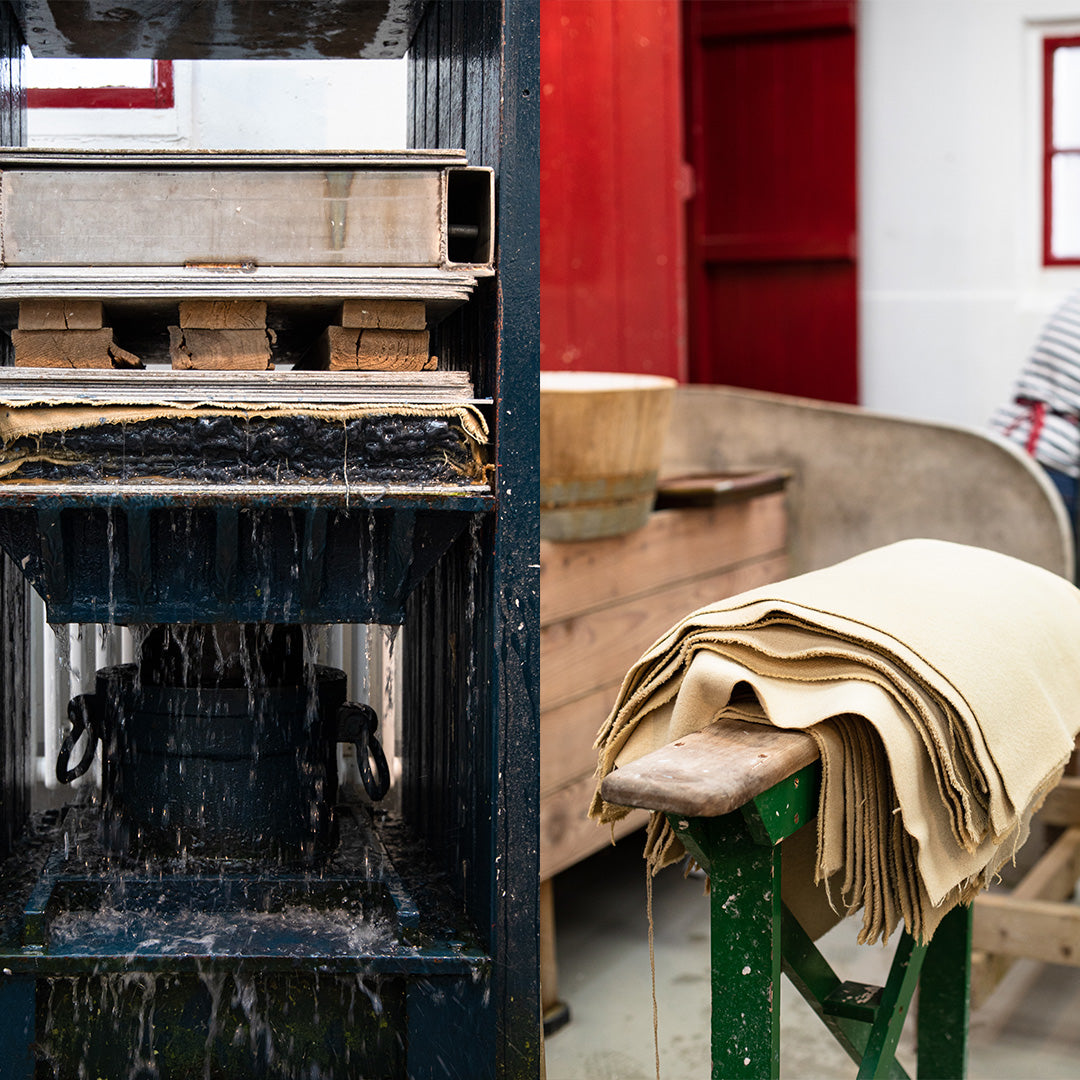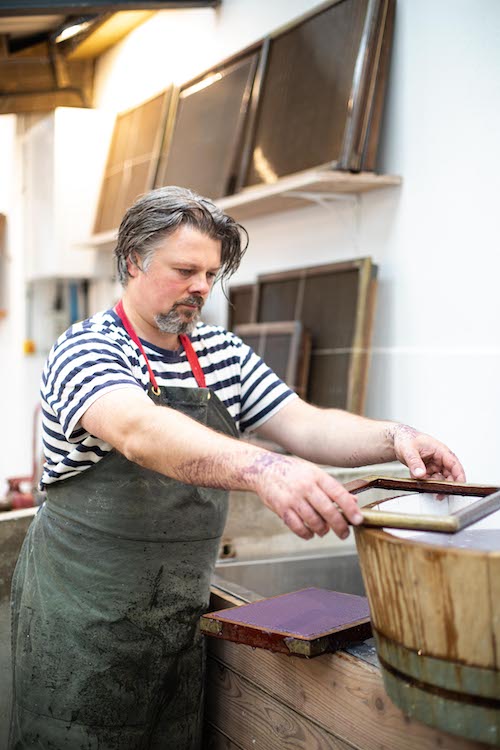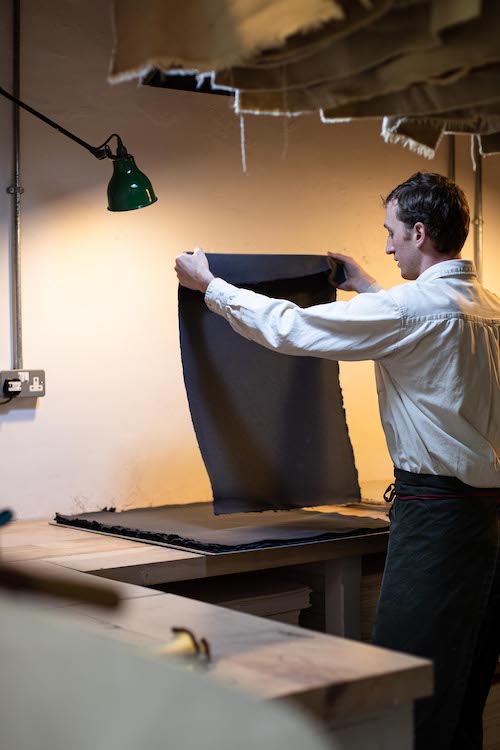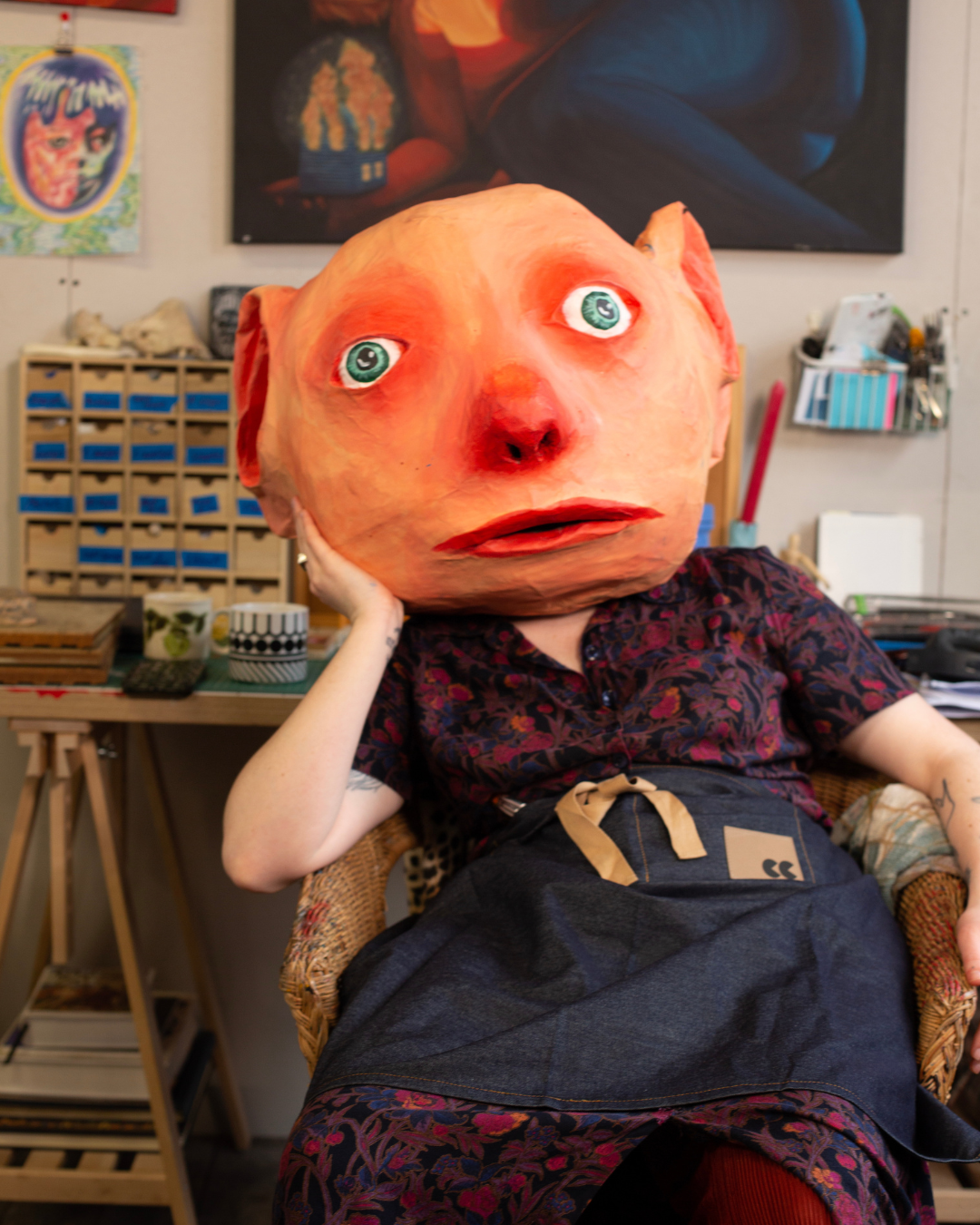A Solution to Wastage
We've partnered with Mark + Fold to create a range of notebooks made out of denim scraps from the factory floor.
We are delighted to introduce you to something incredibly special, Community Clothing X Mark + Fold limited editionnotebooks. These notebooks come in two sizes—A5 and A6—and are made from old scraps of denim collected from our factory. Just like our denim collection, they come in three shades; light blue, indigo and black.
As you know, as part of our impact mission, we are committed to finding new ways to use up old fabric, and so, in collaboration with Mark + Fold, we have created these notebooks.
Mark + Fold is a brilliant British stationery brand that shares our passion for UK-made goods and sharing the stories of the makers and artisans it works with, so it was a really natural fit for us to collaborate with them. They produce considered and beautiful stationery that are designed to get people away from digital mode and enjoy putting pen to paper.
As part of this project, we got to work with and learn more about the extraordinary Paper Foundation, a charity in Cumbria who have been reinvigorating the art of handmade paper making since 2015.
All product photos credit to Mark + Fold
All paper making photos credit to Ella Thomson
We are delighted to introduce you to something incredibly special, Community Clothing X Mark + Fold limited editionnotebooks. These notebooks come in two sizes—A5 and A6—and are made from old scraps of denim collected from our factory. Just like our denim collection, they come in three shades; light blue, indigo and black.
As you know, as part of our impact mission, we are committed to finding new ways to use up old fabric, and so, in collaboration with Mark + Fold, we have created these notebooks.
Mark + Fold is a brilliant British stationery brand that shares our passion for UK-made goods and sharing the stories of the makers and artisans it works with, so it was a really natural fit for us to collaborate with them. They produce considered and beautiful stationery that are designed to get people away from digital mode and enjoy putting pen to paper.
As part of this project, we got to work with and learn more about the extraordinary Paper Foundation, a charity in Cumbria who have been reinvigorating the art of handmade paper making since 2015.
All product photos credit to Mark + Fold
All paper making photos credit to Ella Thomson
Founded by Mark Cropper, Chairman and sixth generation of paper makers James Cropper, who learned that papermaking by hand was on the brink of extinction, with just one couple – who ran Griffin Mill in Ireland - actively using the machinery and techniques. Mark worked with Tom Frifth-Powell to bring the machinery to the Lake District and set up the charity that comprises the working mill as well as an archive and resource centre to preserve this artisan craft.
Alongside the work of education and preservation, the mill makes paper in the European style, using fibres such as linen, hemp and cotton. Their clients include the Guggenheim, The British Library, The Vatican, and the Royal Household.
We sent the Paper Foundation a selection of our natural cotton fabrics to test and see if they were suitable for the handmade paper process paper process and we were delighted when he confirmed they were.
Tom told us:
As you can see from these extra special photos by UCLan student, Ella Thomson, the paper making process is multi-faceted and an antidote to the machine-led world we live in.
Founded by Mark Cropper, Chairman and sixth generation of paper makers James Cropper, who learned that papermaking by hand was on the brink of extinction, with just one couple – who ran Griffin Mill in Ireland - actively using the machinery and techniques. Mark worked with Tom Frifth-Powell to bring the machinery to the Lake District and set up the charity that comprises the working mill as well as an archive and resource centre to preserve this artisan craft.
Alongside the work of education and preservation, the mill makes paper in the European style, using fibres such as linen, hemp and cotton. Their clients include the Guggenheim, The British Library, The Vatican, and the Royal Household.
We sent the Paper Foundation a selection of our natural cotton fabrics to test and see if they were suitable for the handmade paper process paper process and we were delighted when he confirmed they were.
Tom told us:
As you can see from these extra special photos by UCLan student, Ella Thomson, the paper making process is multi-faceted and an antidote to the machine-led world we live in.
The Community Clothing scraps are then shredded and sorted by colour, added to water and placed in the beater for eight hours. This makes a jelly-like pulp from which we can make our paper. For this part of the process, we use a mould an make our paper. For this part of the process we use a mould, it’s like a rectangular flat sieve which the pulp is scooped up from and as the water soaks away, the fibre that is left becomes the sheets of paper. Then the couching starts. Couching is the process of transferring the paper from the moulds onto the woollen felts, where the sheet peels off and stacked, this gives the texture of handmade paper.
Next, the pile of paper is put into a press with fourty tonnes of pressure applied to get rid of the remaining water. The sheets are the peeled away from the felt to make a stack of wet paper with nothing in between. After this, the paper is pressed in the screw press to control the texture and make it more suitable for use. After this the paper goes back between the felts and placed in a dry box four twenty-four hours. Finally, each sheet is checked and all paper that is ready for us can be trimmed and sent to the customer.
You can see more photos and learn about the paper making process over here.
The Community Clothing scraps are then shredded and sorted by colour, added to water and placed in the beater for eight hours. This makes a jelly-like pulp from which we can make our paper. For this part of the process, we use a mould an make our paper. For this part of the process we use a mould, it’s like a rectangular flat sieve which the pulp is scooped up from and as the water soaks away, the fibre that is left becomes the sheets of paper. Then the couching starts. Couching is the process of transferring the paper from the moulds onto the woollen felts, where the sheet peels off and stacked, this gives the texture of handmade paper.
Next, the pile of paper is put into a press with fourty tonnes of pressure applied to get rid of the remaining water. The sheets are the peeled away from the felt to make a stack of wet paper with nothing in between. After this, the paper is pressed in the screw press to control the texture and make it more suitable for use. After this the paper goes back between the felts and placed in a dry box four twenty-four hours. Finally, each sheet is checked and all paper that is ready for us can be trimmed and sent to the customer.
You can see more photos and learn about the paper making process over here.









